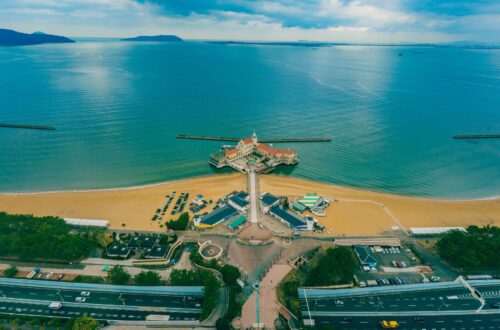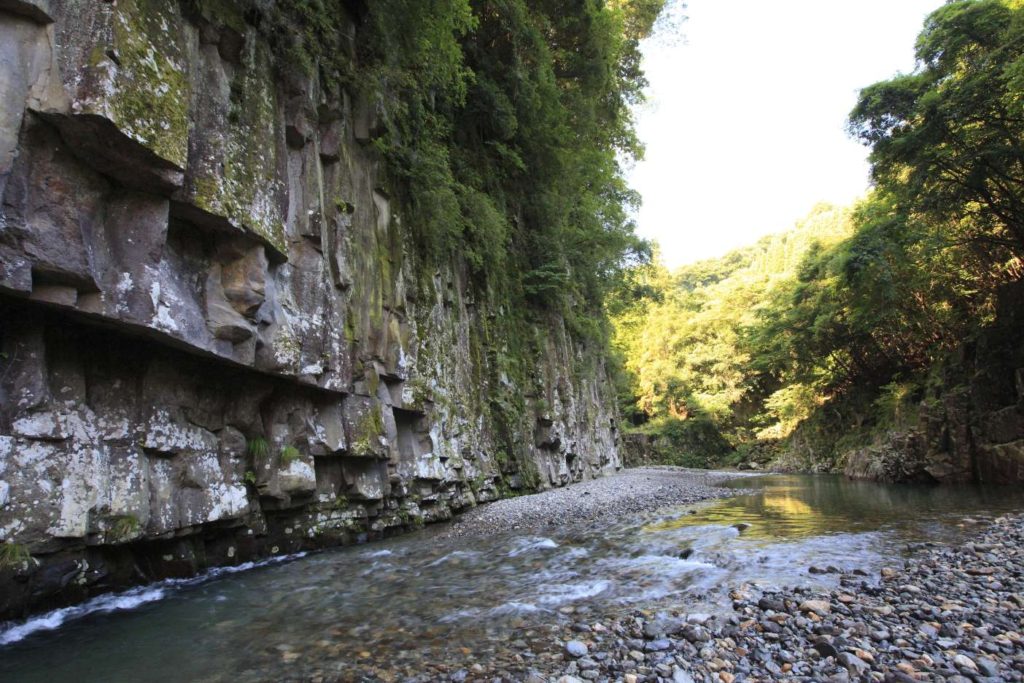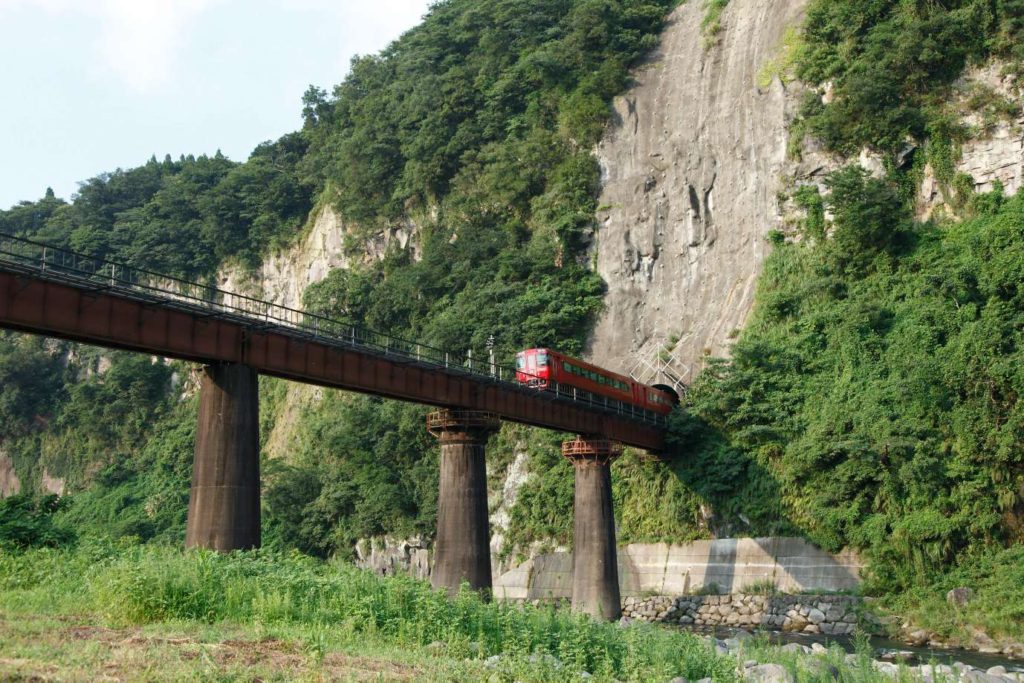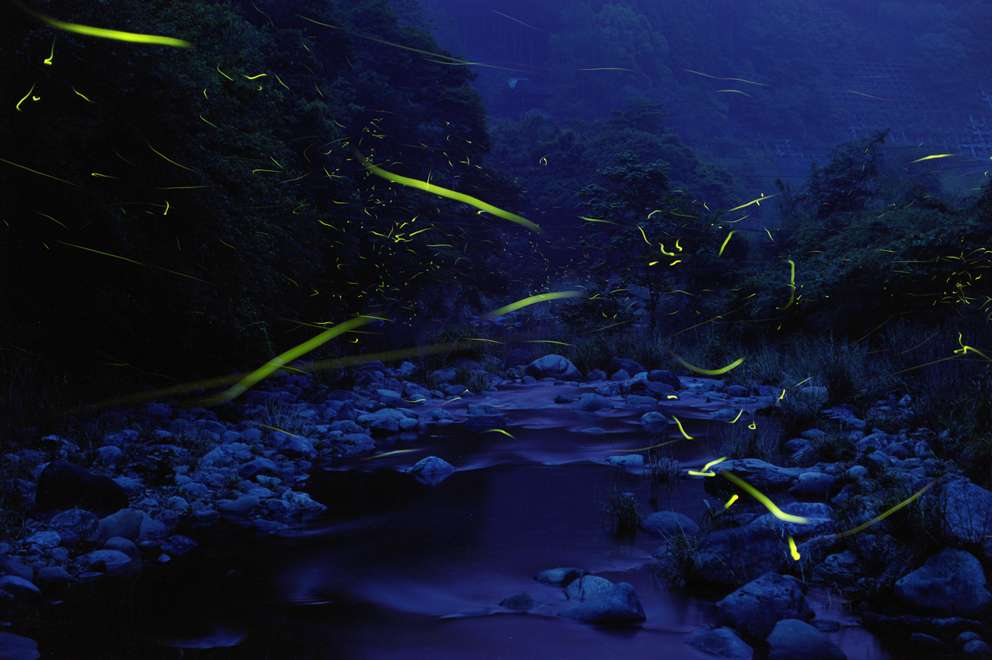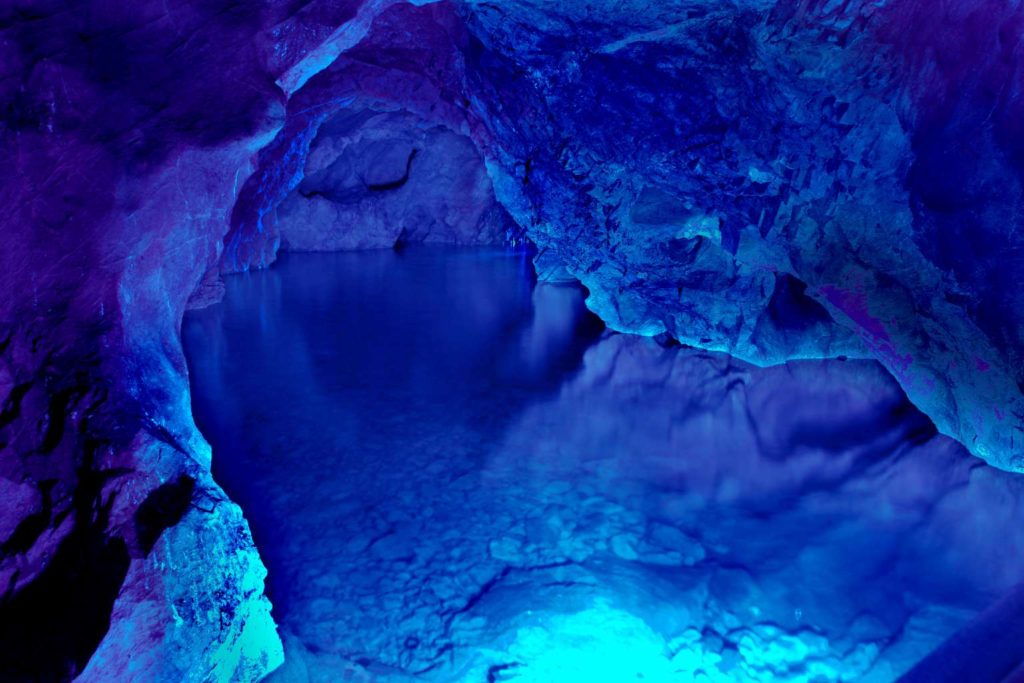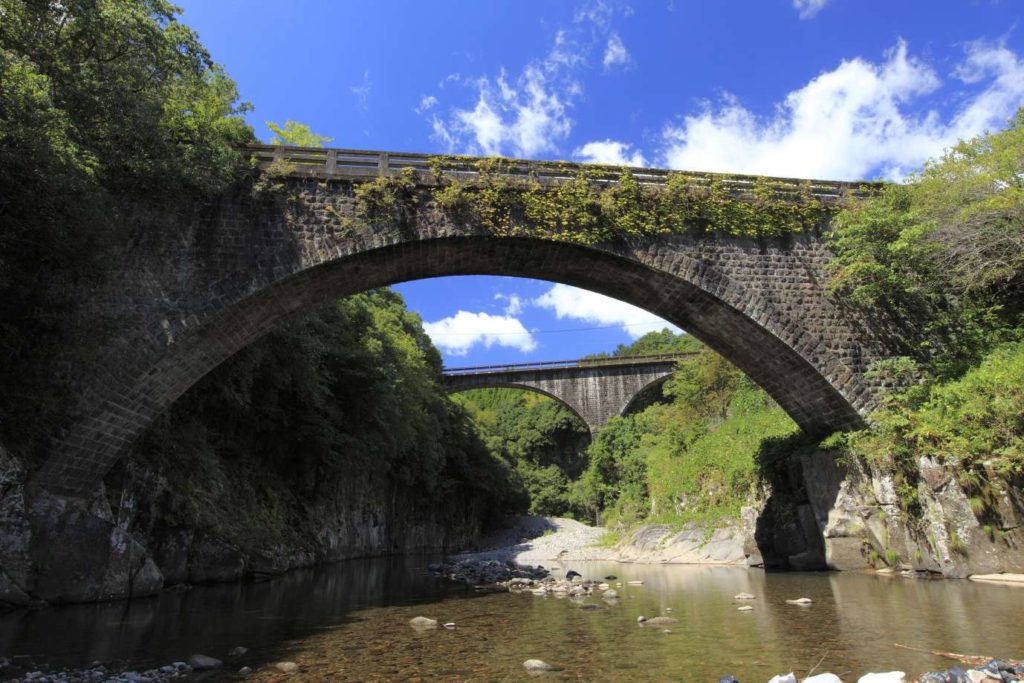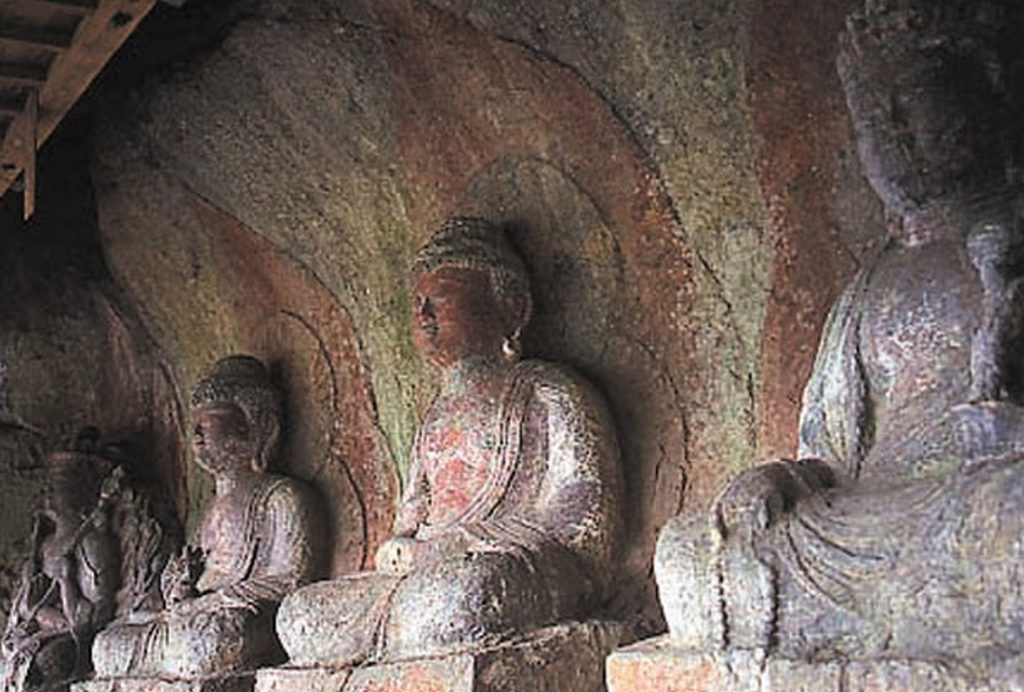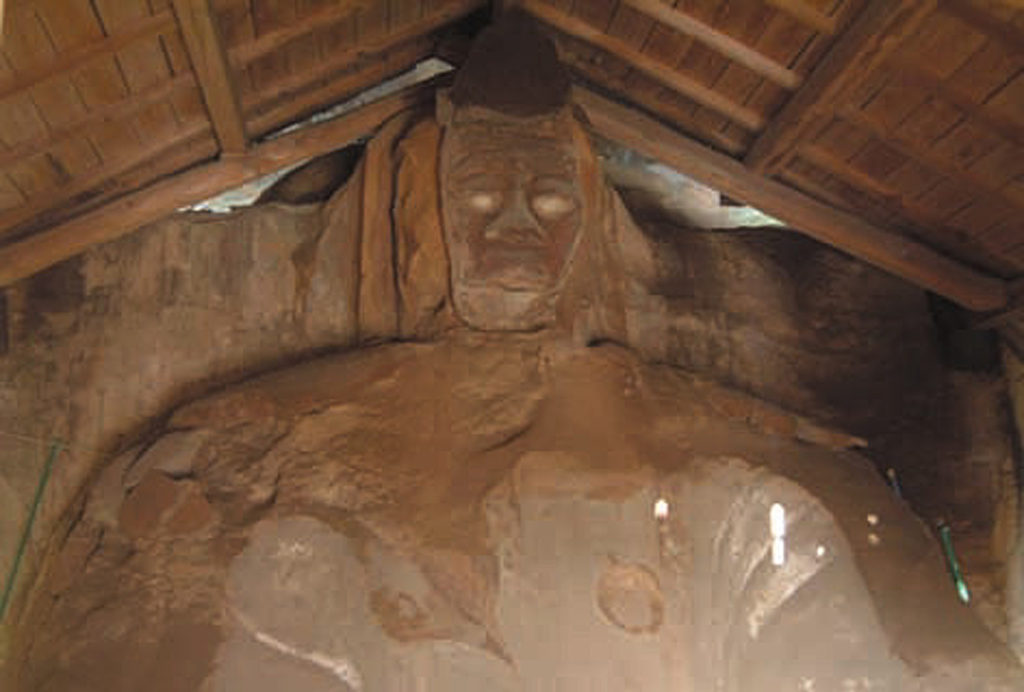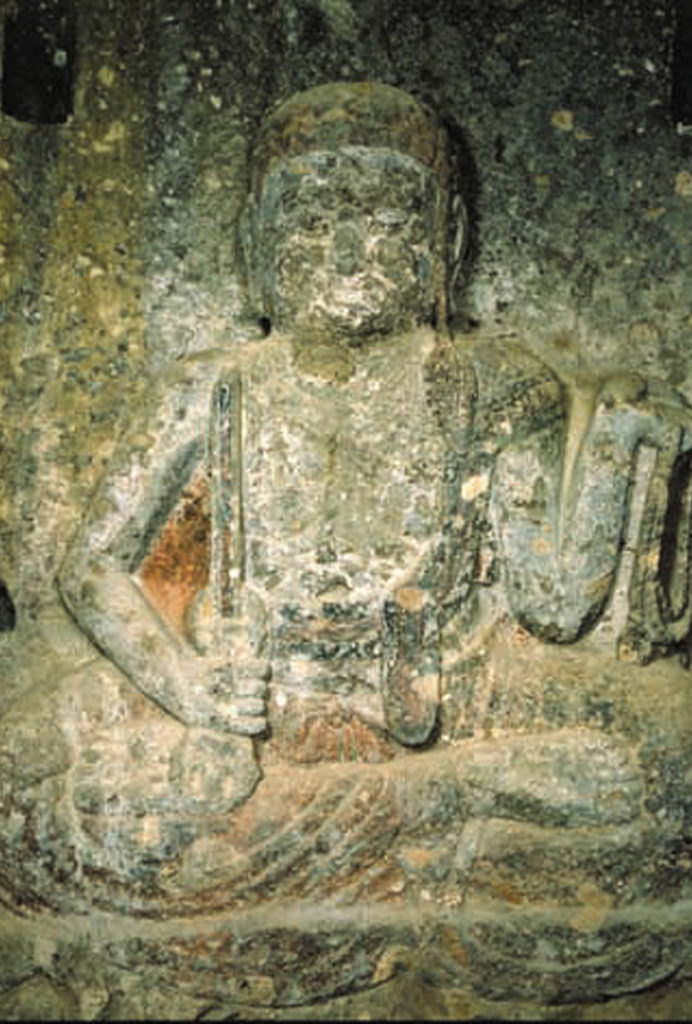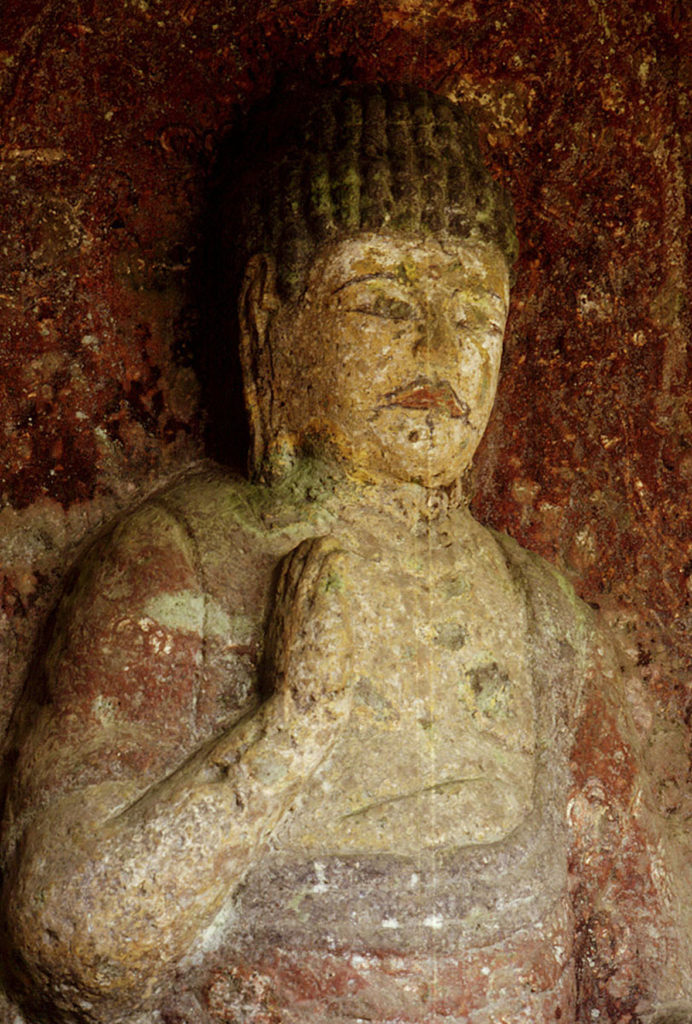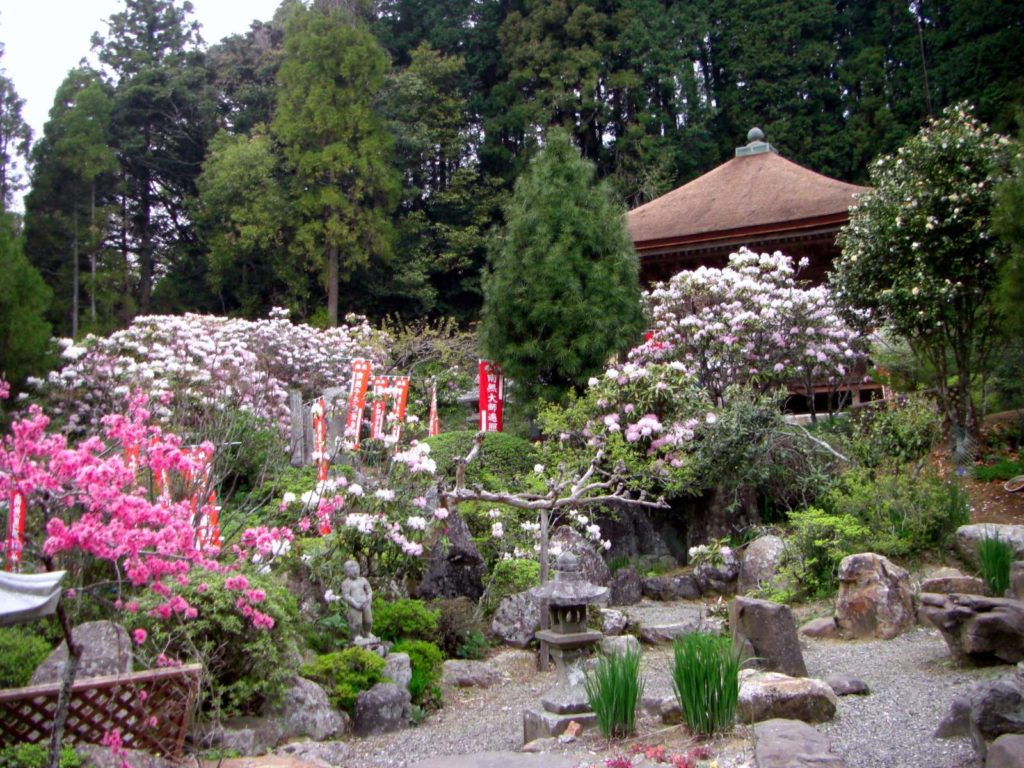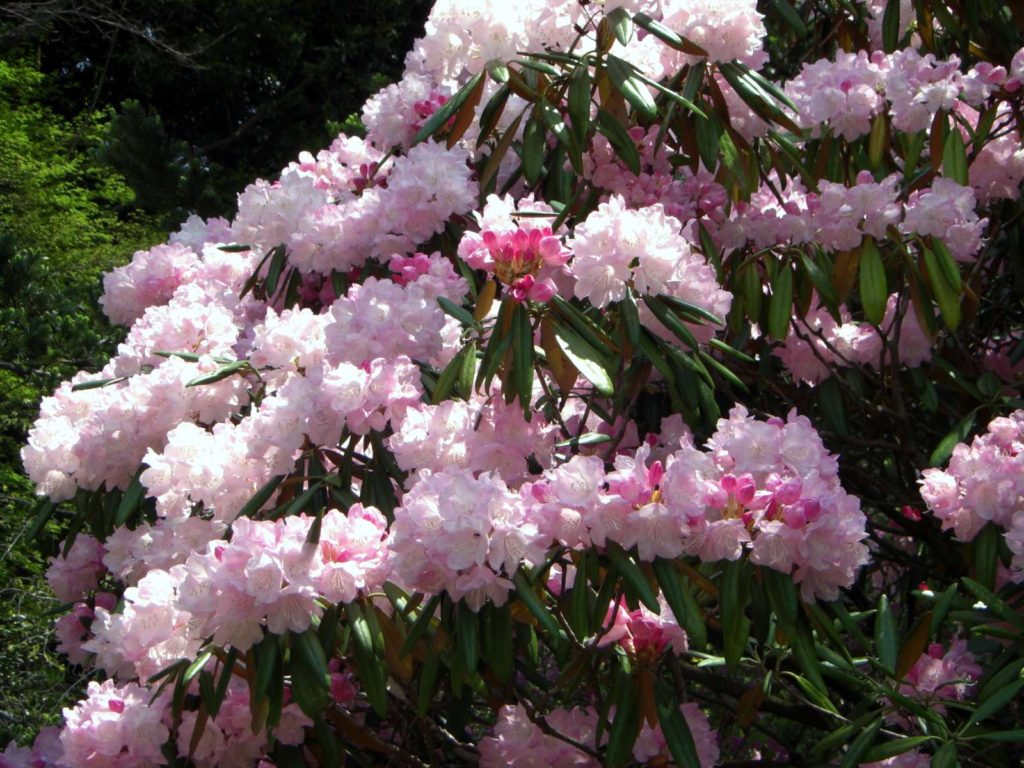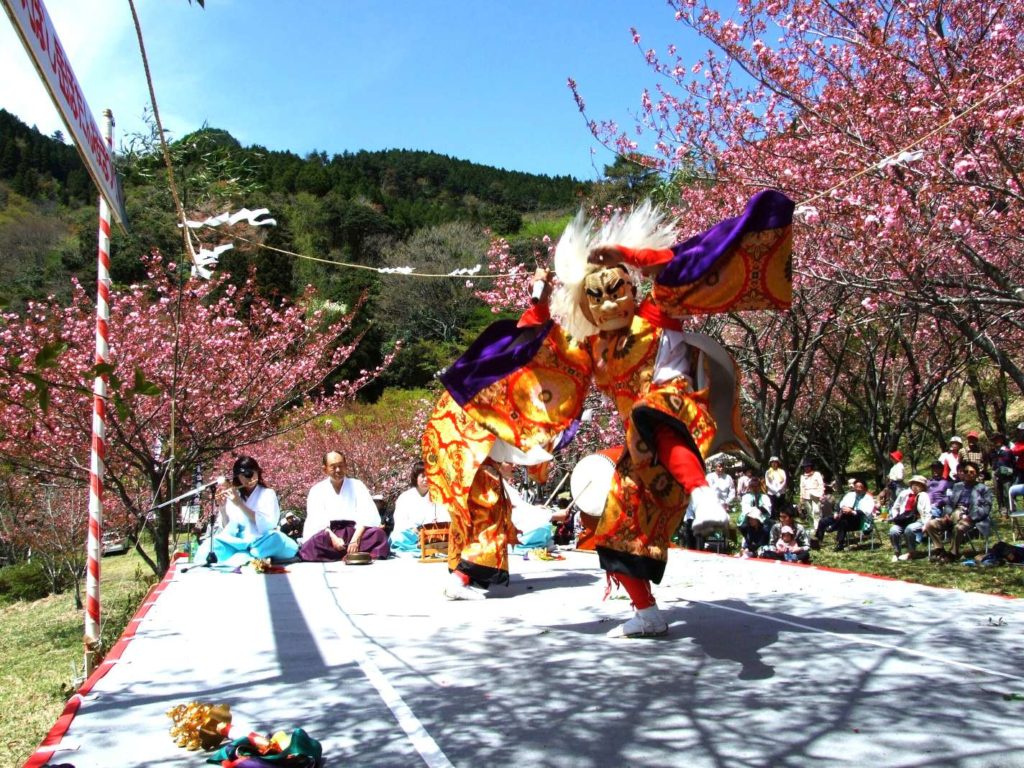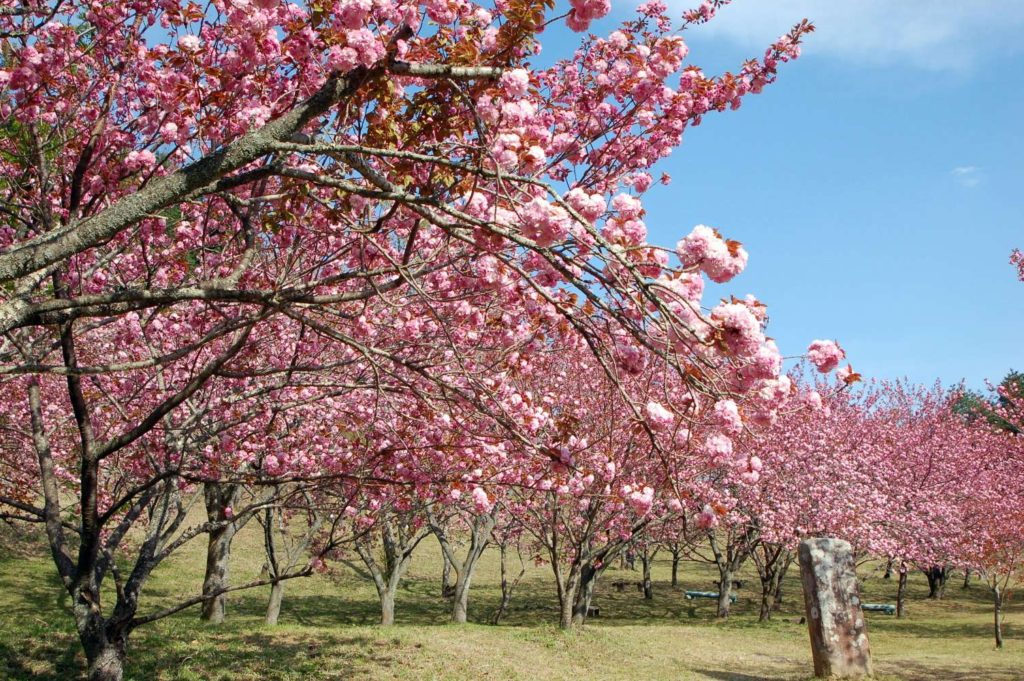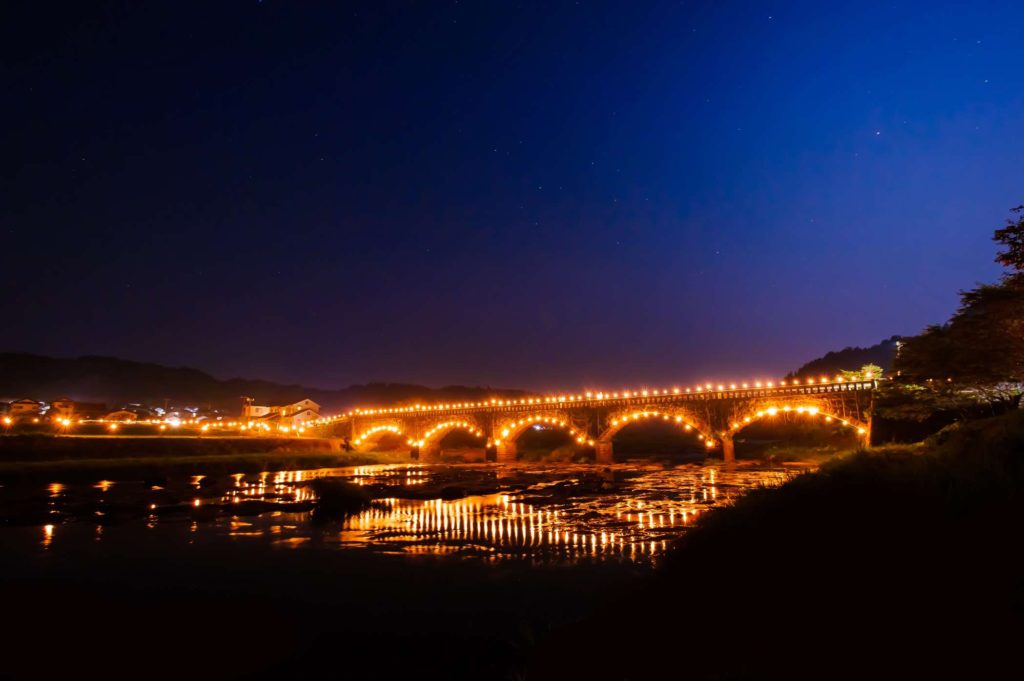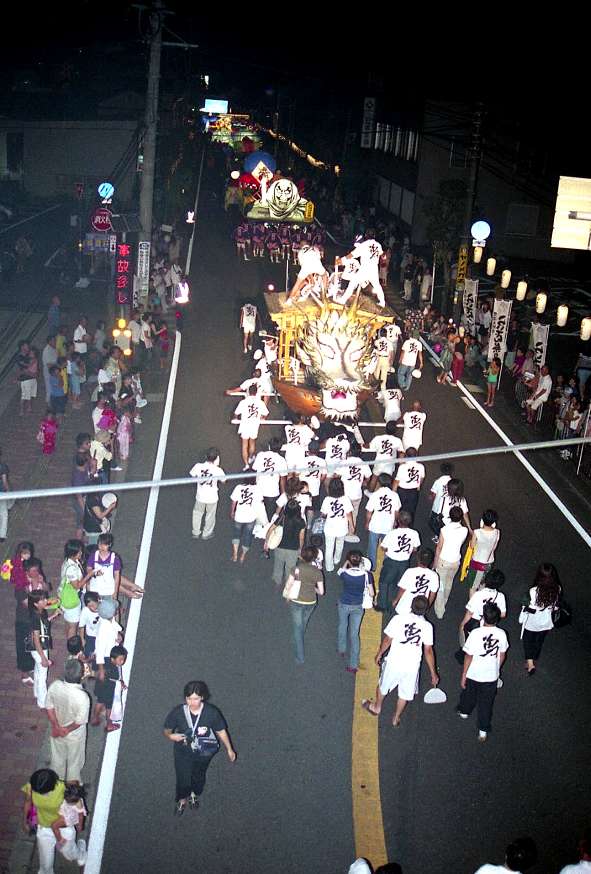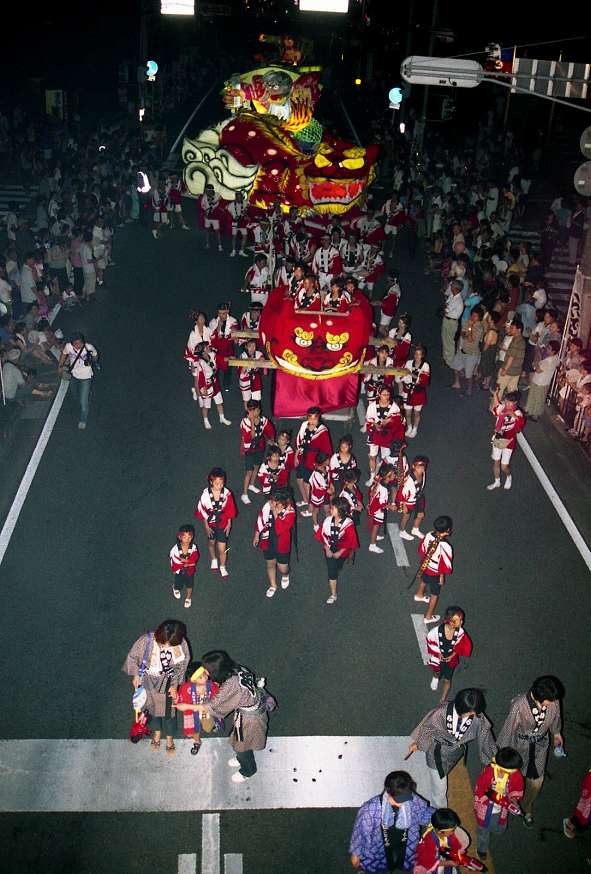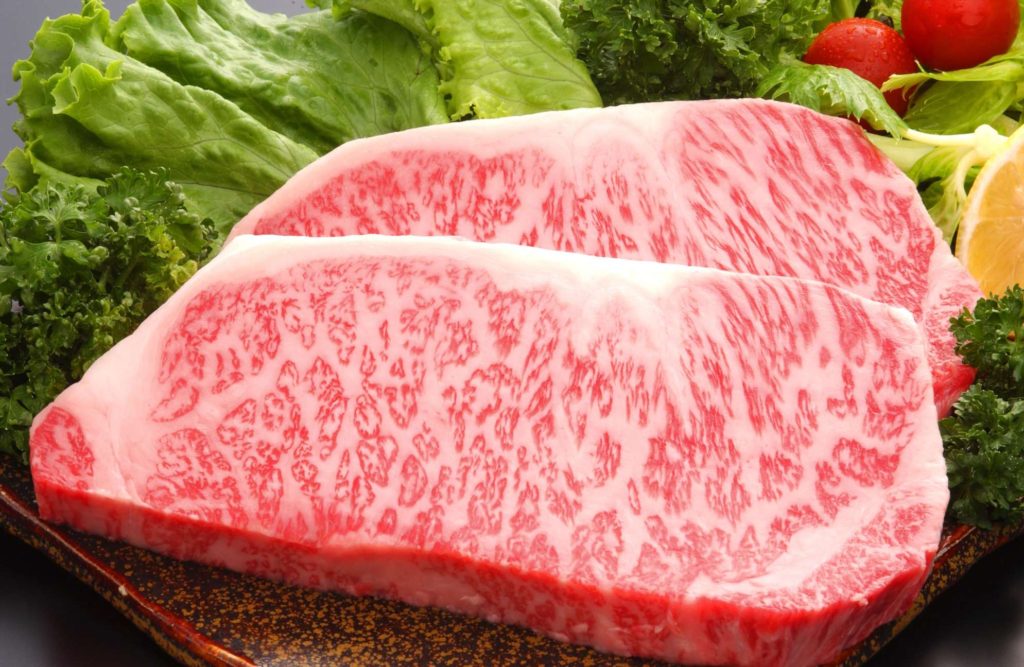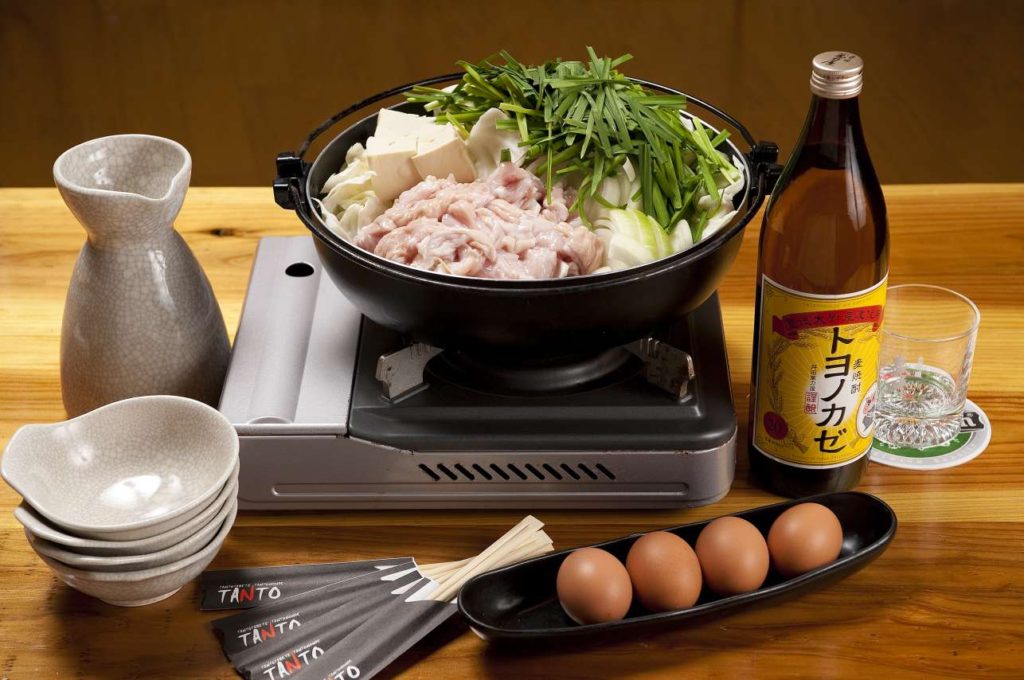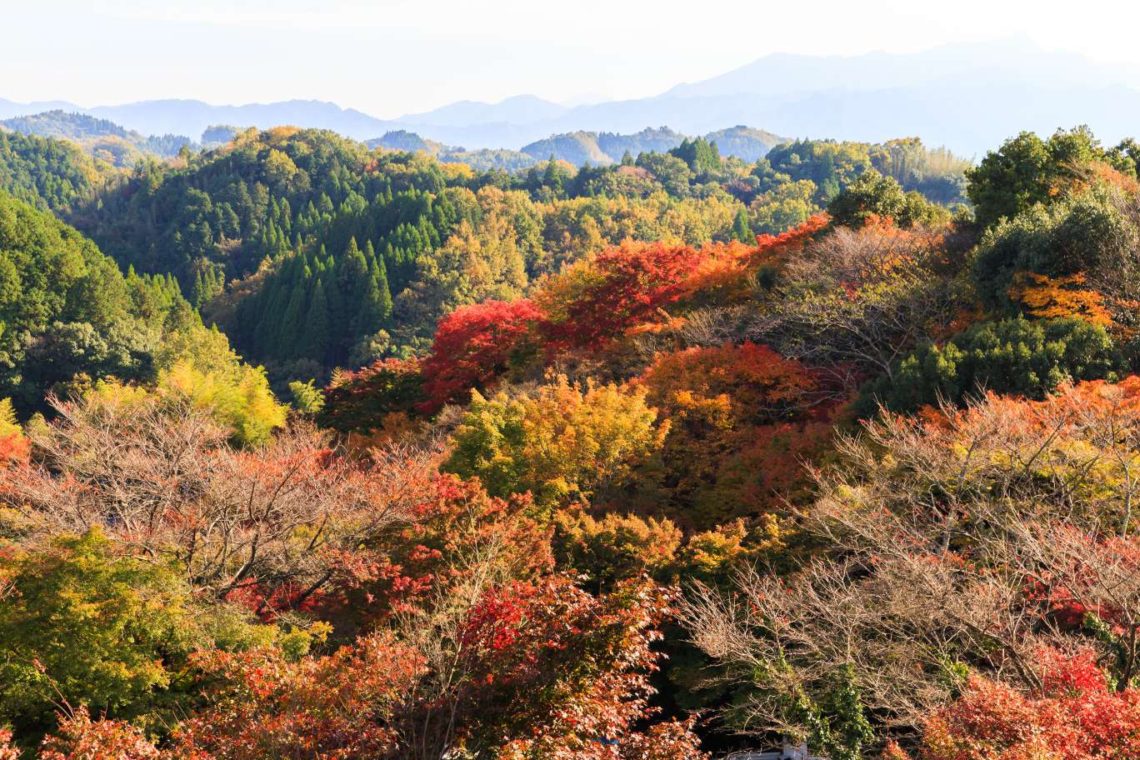
Bungoono – A Complete Guide to Japan’s Secret Beautiful Geopark
A relatively unknown geopark among tourists, Bungoono is home to various fascinating landscapes and nature galore. In fact, the region itself is filled with lush forests, deep canyons, stunning waterfalls and even rustic religious sites. It’s minor presence is not surprising however, given the reclusiveness of the region as well as extremely scarce public transportation.
Nevertheless, Bungoono will definitely rewards those who take their time to research and explore the beauty of the area. Let’s explore deeper into this gorgeous geopark, shall we?
Table of Contents
The History of Bungoono
Bungoono’s history dated 90,000 year ago; where the volcano Mt Aso (阿蘇山) erupted frequently. This resulted in the everchanging landscapes; leading to the formation of various mesmerising waterfalls, canyons and cliffs. Because of this, the region is well-known for its lush nature unique geopark landscape.
Additionally, the region is rich in Buddhism history too; comprising of stone Buddhas and little rustic temples. This is because this area was one of the few areas where Buddhism first arrived and developed back between the 6th century. Buddhism came from China, and so to the art of carving stone Buddhas.
The region’s rich source of volcanic rocks helps in promoting the carving of Buddha statues, as they are softer and much easier to carve compared to other rocks. Carving Buddha statues out of stones indeed became a popular trend; especially between the late Heian period (平安時代) and early Kamakura period (鎌倉時代); 12 – 13th century where people started embracing Buddhism even deeper due to ongoing civil wars.
In fact, the name Bungoono itself did not come about until 2005. Prior to this, the region comprises of 7 small towns and villages. These are Asaji (朝地), Inukai (犬飼), Ogata (緒方), Ōno (大野), Chitose (千歳), Mie (三重) and Kiyokawa (清川). In 2005, eventually these towns and villages are combined into one city, known today as Bungoono (豊後大野).
Exploring Bungoono
Bungoono itself is unique from other cities, in a sense that it is a city that doesn’t look like a city. As mentioned in the history section, this city is created through the combination of 7 small towns and villages and is the third largest city in Oita prefecture. Because of this, most of the towns don’t really have skyscrapers (with Mie being the closest to resemble a city) unlike the prefecture capital, Oita. Instead, the city resembles more of a countryside town, filled with paddy fields, village houses and mountain ranges.
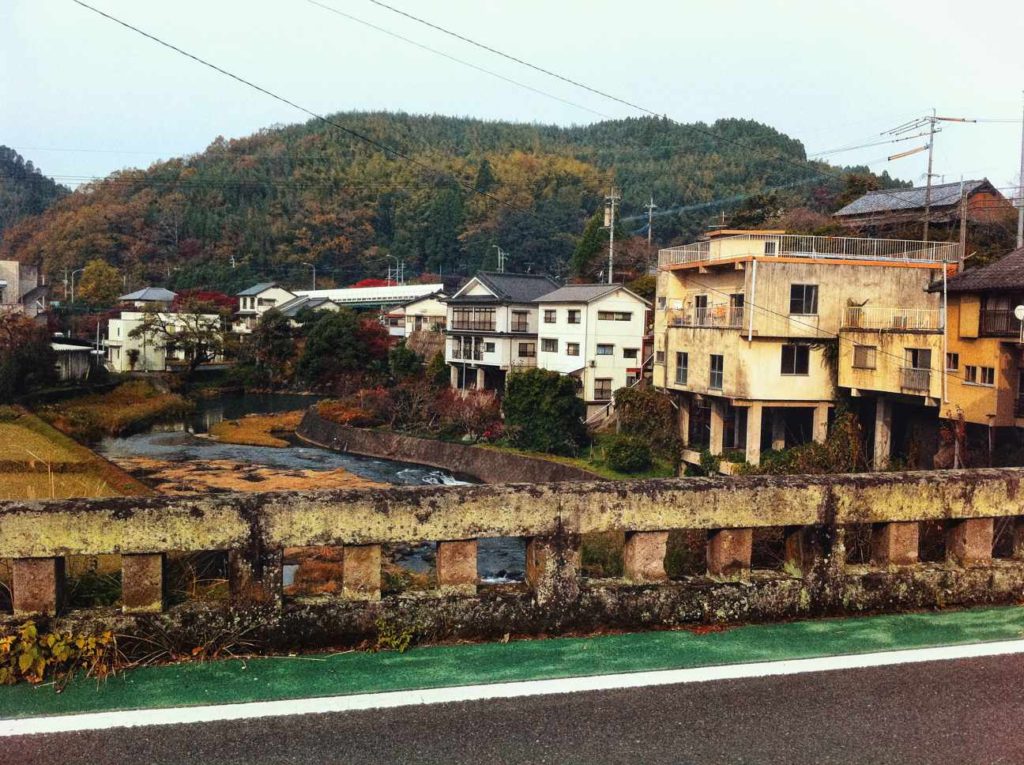
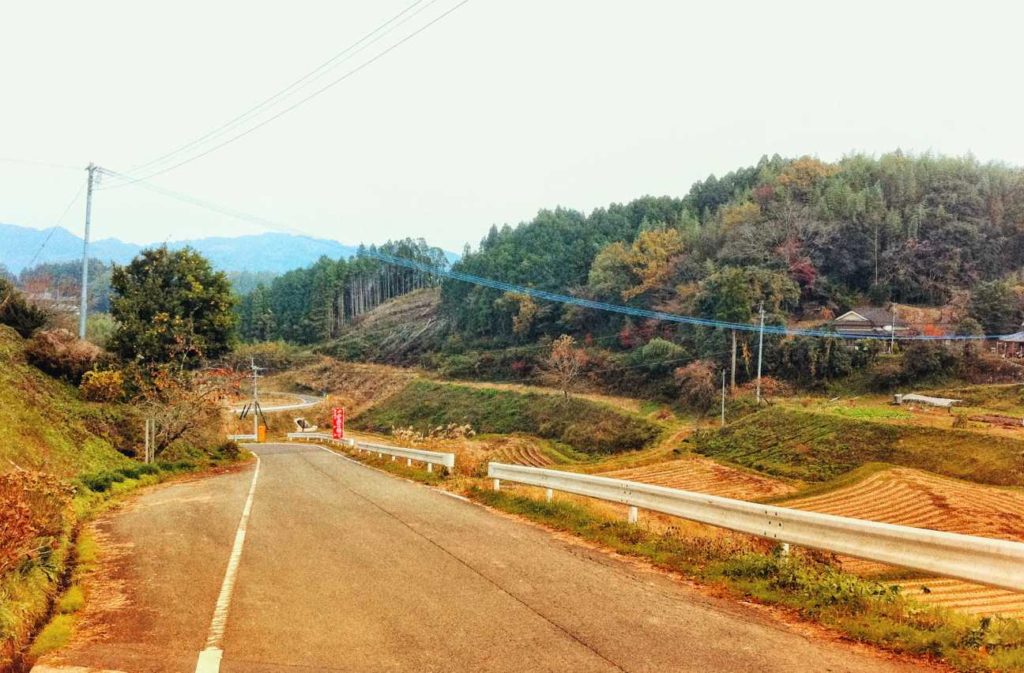
With that in mind, let’s check out what this rural city has to offer:
- Firstly, get to know the geopark’s rich and fascinating natural landscapes.
- Next, if you are into history and architecture, look out for these ancient and rustic sites.
- Also, don’t miss out on these places if you are into festivals, flowers and autumn leaves.
- For the foodies, do not miss out on these mouth-watering and hearty local delicacies of Bungoono.
Save In Pinterest
No time to read this Bungoono travel guide now? Click on the save button and pin it for later!
If You Love Nature
For Those Who Love Waterfalls
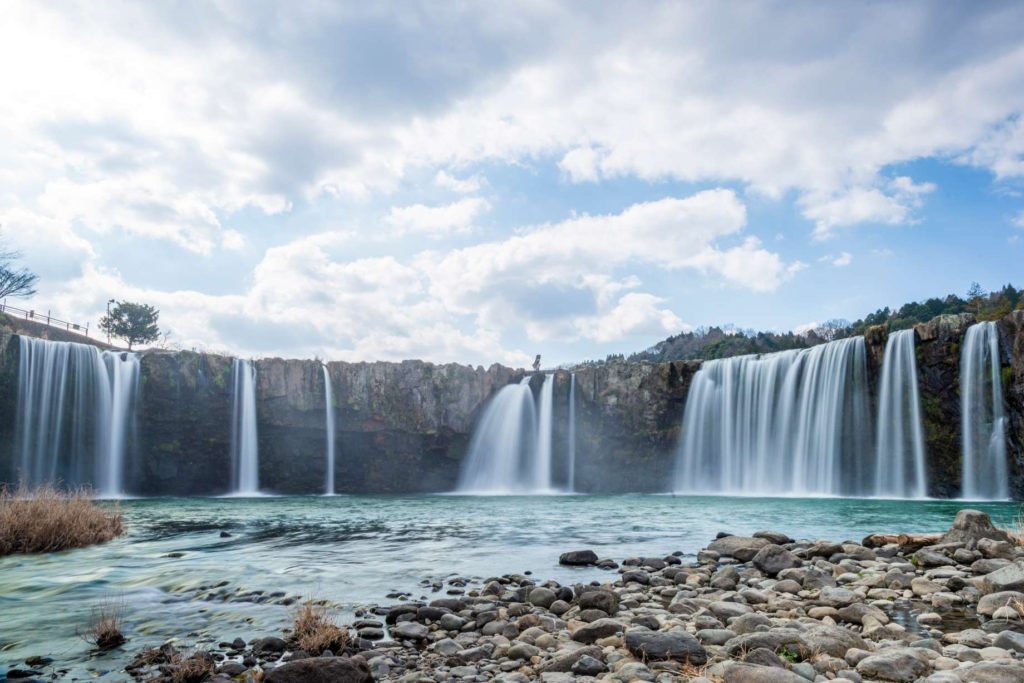
Known among the locals as the Niagara Falls of Bungoono for its stunning beauty. The Harajiri Falls towers about 20 metres and is shaped like a horseshoe, conveying an overall sense of natural elegance. What makes it even more unique is its location on a flatland, right next to a roadside rest area; as more often than not, waterfalls are located deep within the forests or mountains.
There are certainly many ways to explore the beauty of this waterfall, especially if you love photography. One can go close up to the waterfall to capture the beauty of the water flows. Alternatively, consider heading to the suspension bridge on top for a completely different angle of the waterfall.
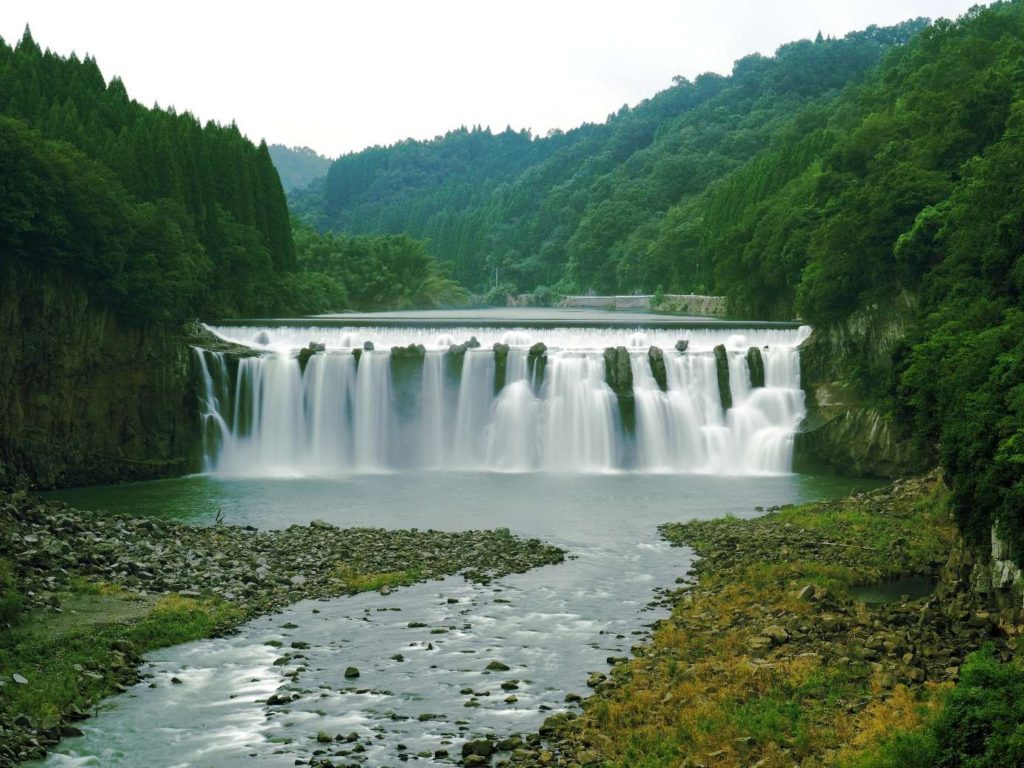
Chinda Falls is an impressive site renowned for its artistic beauty among locals; where one can witness the water flowing dynamically down to the river while being surrounded by the lush nature. In fact, said beauty even attracted the legendary Japanese painter Seshu (雪舟) to travel hundreds of kilometres just to paint a scenery of it.
Additionally, there is also an abandoned power plant nearby the falls that was once utilised in the early 1900s. Ruin explorers especially should check this site out, given that many of its ruins still remained intact beautifully while being covered by vegetation. This further allows you to even capture some amazing photos of the ruins together with the magnificent waterfall.
Checkout Some of These Breathtaking Cliffs
A fascinating canyon that is formed from the eruptions of the nearby Mt Aso. This 70m high canyon is known for its peculiar rock formation known as columnar jointing. The rocks here resemble layers of columns that are separated by joints and fractures caused when the rocks contracted. It creates an illusion that you are looking at layers of curtains, except that these are made of rocks.
Furthermore, the canyon is also known for its bridges, such as the 75m high modern-looking Okudake Bridge (奥嶽橋) where you can witness a breathtaking scenery of the ravine from the top. And if you are willing to explore, nearby lies the Inukaeri bridge (犬返橋) featuring an old secluded stone arch bridge that is covered by vegetation and
An illustrious cliff that assimilates the beauty of it’s rock formations together with the charm of a railroad. Similarly to the Taizako Canyon, the Iwado Overview is another spot to witness the peculiar and yet beautiful rock formation of columnar jointing. More importantly, this spot is a haven for local train enthusiasts who wish to catch a rare sight of a train passing through the cliff’s little tunnel. If you are into vlogs and Instagram reels, consider paying a visit to this site to catch this rare and enchanting sight.
Interested in Firefly Watching?
A relatively hidden valley that features peculiar-shaped stones along the river that were formed by the eruption of Mt Aso thousands of years ago. The strangeness of the shape of the rocks together with the river and the mountainous background creates an intriguing and yet beautiful landscape overall. So much so that the site is even listed as one of Japan’s top 100 Exquisite and Well-Conserved Waters.
The site is also reputed to be a hotspot for firefly viewing. During mid-May to early-June from 8pm onwards, thousands of fireflies will be illuminating the valley, dancing in the dark while finding their mates. One can enjoy the peacefulness of the area as well as admiring the enchanting scenery filled with these little creatures. In fact, the best place to look out for is a mysterious cave known as Hoge-iwa (ほげ岩), where legends said the small cave in this area is dug by a demon long ago.
If You Are A Cave Explorer
The longest underwater cave in Japan happens to be located in Bungoono as well. Inazumi Underwater Cave was formed through the vigorous volcanic activities of Mt Aso 300 millions ago. Today, it is a magnificent site on its own, boasting stalactites, coral stones, helictites and even underwater lakes. In particular, there is a sparkling emerald green spring that resides within the cavern, which contrasts beautifully with the cavern’s crude surrounding.
With a constant temperature of 16 degrees all-year-round, visitors will be able to take their time to marvel at the cave’s fascinating structure comfortably. And for the adventurous ones, consider going for a rare scuba-diving experience in the cave’s underwater lakes.
Time: 9.00 am until 5.00 pm
Entrance Fees: 1,300 Yen per pax, 1,000 Yen for middle, high school as well as university students, 700 Yen for 4 years old until primary school.
For the Architecture & History Buffs
Check Out Japan's Largest Bridge Arches
Two arch stones bridges that are located side-by-side along the Okudake River (奥嶽川). Both Todoro Bridge and Deai Bridge are renowned for having the first and second largest arch respectively in Japan. Deai Bridge was the first to be built in 1924, followed by Todoro in 1934 for the purpose of connecting both sides of the river which are separated by a deep canyon. Today, visitors can walk across these two bridges while admiring the gorgeous nature scenery.
While the scenery from atop these bridges are stunning, one should not miss out also for some stunning photo opportunities from the river banks. Head down towards the river banks for a chance to capture a shot of the bridges side-by-side, while being surrounded by the lush nature together with the emerald green river. Also, if you are planning on visiting during November, don’t miss out on this site as the surroundings will be decorated by the warm and vibrant autumn leaves.
Japan's Largest Cliff Carved Buddha Statue with A Touch of Hydrangea
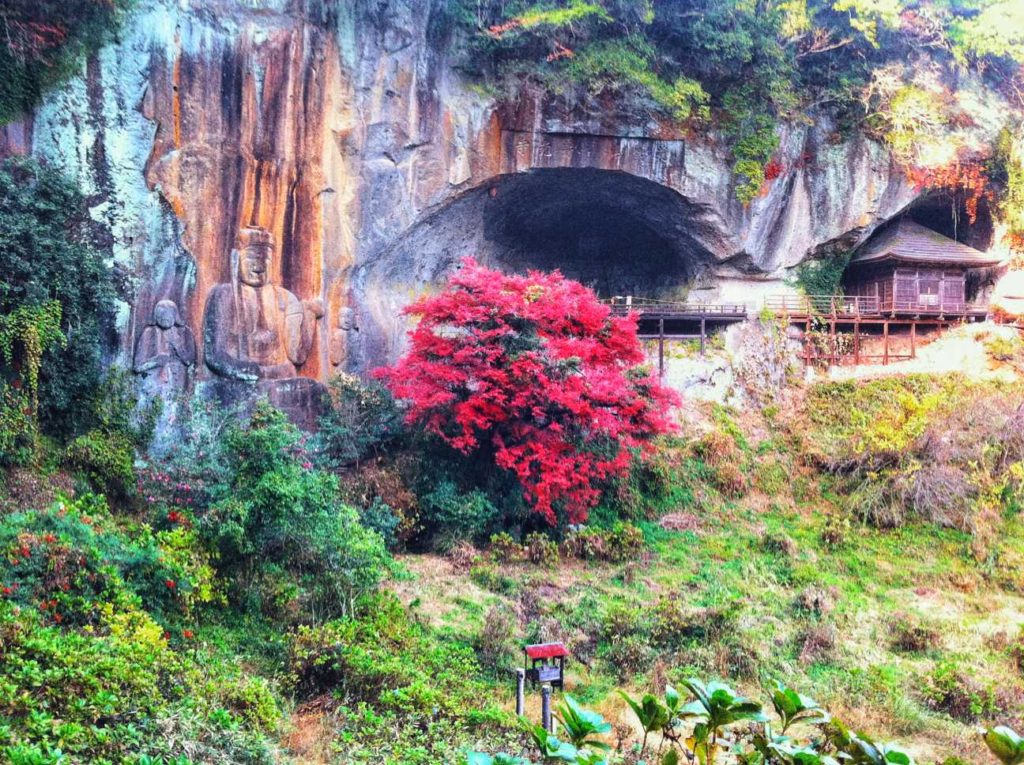
Formerly built as a Shingon (真言) sect Buddhist temple in the 6th century, the temple features one of the largest giant Buddha stone statues in Japan. The giant Buddha statue is Fudo-myoo (pronounced Fudou-myouou/Fudō-myōō/不動明王), the vanquisher of evil and is said to have been crafted along the cliffs. Furthermore, the temple’s architecture is a unique one as well, with the main wooden halls located on two shallow cliff holes.
In fact, one can walk around the temple grounds and admire the rugged cliffs that are covered by vegetation, while being accompanied by the solemn presence of the Buddha statue. Also, for the flower lovers, consider visiting during mid-June to July summer, where numerous hydrangeas will bloom throughout the temple complex, giving the overall complex a complete make-up. For more info, check out my separate article on my trip to this fascinating temple.
Can't Get Enough of Giant Buddha Statues?
A rather small and humble site that houses a group of large Buddha statues crafted during the late-Heian period (平安時代) in the 11 – 12th century. There are a total of 5 of them and these were crafted out of tuff formed by Mt Aso’s eruption 90,000 years ago. Despite having a rather small complex, the carvings themselves are well-maintained and worth checking out for their intricacies. In particular, one can still observe the little details of the carvings, such as the various arms of the Thousand-Armed Kannon (千手観音) statue and the smaller faces of the Kannon with Eleven Faces (十一面観音).
Often missed out by many tourists, Osako Magaibutsu features a large and also peculiar Buddha statue. The statue itself was once carved out of a brittle stone formed by pyroclastic flows 600,000 years ago. What makes it unique is the face portion, which is plastered with clay mixed with fiber. This gives the statue a rather peculiar and mysterious look; with the addition of erosion caused by the weather over the years. If you are someone who enjoys exploring the off-beaten path, be sure to check out this hidden spot.
Stone Buddha Statues With a Vestige of Historical Figures
An intriguing Buddha statue in Bungoono that is carved along the cliff formed 90,000 years ago from volcanic activities. The statue is a carving of Fudo-myoo (pronounced Fudou-myouou/Fudō-myōō/不動明王), the vanquisher of evil in Buddhism and was built during the warring Kamakura period (鎌倉時代). Also, this place was once visited by Yosano Akiko (与謝野晶子), the maverick poet who staunchly disapproved the Russo-Japanese War in 1905. One can in fact find a poem engraved by her next to the statue, complimenting the statue’s intricate beauty.
A group of stone Buddha statues that were crafted by Ogata Saburo Koreyoshi (緒方三郎惟栄), a nobleman known for aiding the famed Minamoto Yoshitsune (源義経) in the famous Genpei War (源平合戦). There are two sections to look out for; the Eastern (Higashi/東) and also the Western (Nishi/西) sections, each with 3 statues side-by-side. It was said that Koreyoshi ordered multiple sections to be built in order to increase his influence back then. Today, one can still witness the intricate details of these carvings, together with the statue’s fading colours which symbolises its resilience.
Those Who Are Into Arts and Culture
For Those Who Enjoy Viewing Flowers and Cherry Blossoms
A rather small Shingon (真言宗) Buddhist temple in Bungoono that was established way back in AD 570. It comprises of a small prayer hall that is located strategically on top of a ridge comprised of columnar joints; where photographers can catch a breathtaking overview of the surrounding geopark. The temple’s main highlight however is the surrounding rhododendrons (シャクナゲ) trees which attract local flower lovers. These vibrant pink flowers blossom throughout spring from mid-April (20th onwards) until the end of April. One can witness the beauty of the contrast between the bright pink flowers in comparison with the temple hall’s wooden rustic appearance.
Formerly established as a park of a temple called Josuiji (浄水寺) by the Otomo clan (大友氏), Eboshi park is a popular spot among locals in Bungoono for cherry blossom viewing (hanami/花見). In particular, Eboshi park features over 500 trees of the unique Botan-Zakura (ボタン桜), a type of cherry blossom simply known for having numerous petals on it. The best time to view these beautiful but fleeting flowers is during mid-April to late-April. Also, if you visit during mid-April, be sure to catch the annual Mt. Eboshi Botan Sakura Festival (えぼし岳ぼたん桜まつり); where one can witness the sacred Shinto music and dance perfamance (Kagura/神楽) under the enchanting cherry blossoms.
Looking for a Quiet Spot to Enjoy the Autumn Leaves?
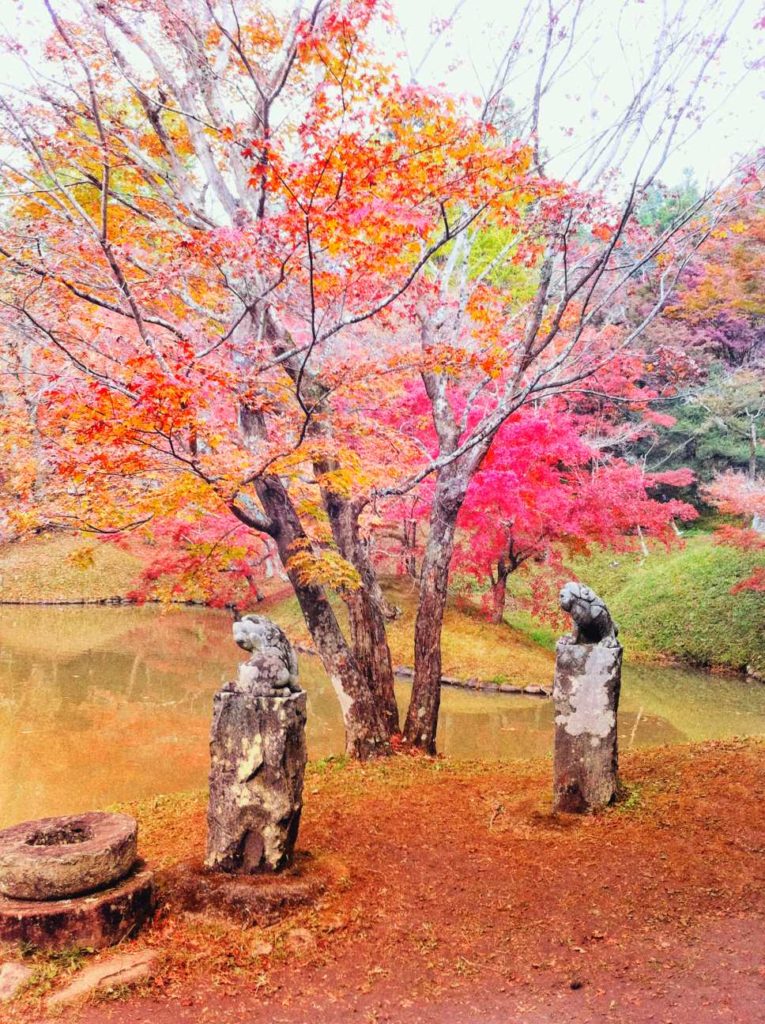
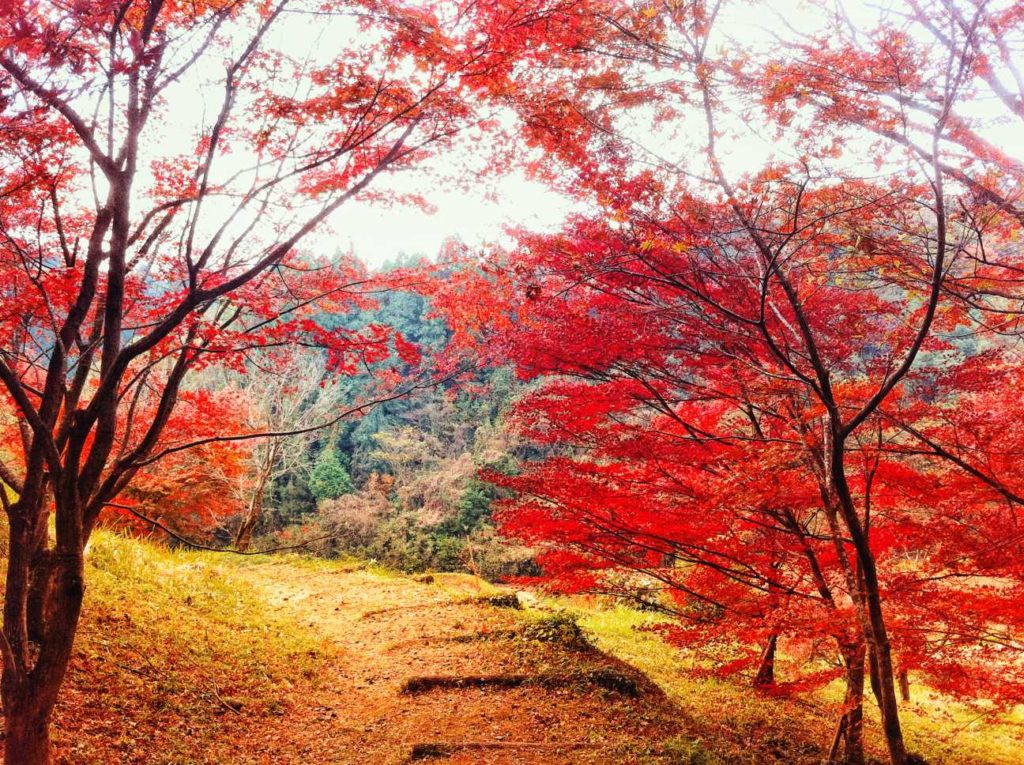
Formerly a site for a villa for feudal lord Nakagawa Uemon (中川平右衛門) in 1664, Yujaku park serves as the go-to spot among locals in Bungoono for autumn leaves viewing. The park itself features a hilly landscape surrounding a lake in a middle together with the presence of maple trees. During autumn, these trees will magically transform into orange, turning it into an enchanting wonderland.
In fact, visitors can enjoy strolling around the hills together with just the locals; as this site is free from the hordes of foreign tourists. Photographers too will definitely enjoy it here too, as there are plenty of opportunities for a good photo, especially with the presence of the stone stairs covered in autumn leaves. The best time to visit is undeniably from mid-Nov to end-Nov, and if you are keen, check out my separate article on a guide to this enchanting place.
Look Out for These Local Festivals
A rather small and yet also spectacular festival that occurs in Bungoono on 14th August every year. In fact, it’s history started from 1753 during the Edo period (江戸時代) in order to pray for bountiful harvests. During this event, the Ogata plains (緒方平野一帯) together with the Harajiri Falls (原尻の滝) will be lit by over 13,000 torches. Visitors should catch the scenery from 7.30 pm onwards for some stunningly beautiful night sceneries of the plains and waterfall being lighten up luminously in the darkness of the night. Be sure to check out Tourism Oita’s website for more info prior to visiting (event may be cancelled due to bad weather; look out for the word chushi/中止 which means cancelled).
This festival which occurs on 13th August every year serves to worship the gods whom local belief will protect those who are in danger with lightning and thunder (Raiden/らいでん/雷電 means lightning and thunder). During this time, floats containing colourful Japanese historical figures and mythical creatures will be paraded across the city of Mie (三重) from 6.30pm onwards, while being accompanied by the roaring crowd. Also, the festival presents the perfect opportunity to immerse into the lively performances by the local participants; including traditional dances, karate (空手) showcase and the thundering Japanese drum (taiko/太鼓) performances. If you are looking for an authentic Japanese festival to experience, then be sure to check out this rare opportunity.
For The Foodies
Enjoy the Taste of Bungoono's Wagyu
Kobe (神戸) certainly isn’t the only city that is famed for its beef, as Bungoono has its own variant of gourmet beef. These beefs are from black cattle that are raised in the fertile open grazing lands of Bungoono. These beefs are not only known for their rich taste, but also their remarkable tenderness which melts in your mouth as you chew. Because of this, it is nicknamed the ‘Oita Wagyu (大分和牛)’.
For those who are keen, Kagura-tei (神楽亭) in particular serves tasty grilled Bungo beef set meals (豊後牛焼肉定食) at a reasonable price for around 1,500 – 2,000 Yen. Alternatively, roadside stations (道の駅) including Michi-no-eki Asaji (道の駅朝地) and Shirataki Restaurant (白滝レストラン) at Michi-no-eki Harajiri-no-taki (道の駅原尻の滝) too serve this delicious beef as well.
Shirataki Restaurant serves their specialty Tobanyaki set meal (陶板焼き定食); a technique involving roasting the beef on ceramic plates which preserves the beef’s warmth texture. On the other hand, if you prefer fried beef, check Michi-no-eki Asaji’s (道の駅朝地) specialty, the Bungo-gyu Menchi Katsu (豊後牛メンチカツ). These are Japanese breaded and deep-fried beef patty served in small portion which makes for the perfect afternoon snack, especially after a day’s long journey.
Craving for Some Hotpot?
If there is a meal that will certainly satisfy your cravings for hotpot, look no further than this local’s specialty. Buta Horumon Motsunabe or pork offal hotpot is a stew that is prepared in a cooking pot (nabe/鍋) together with pork offals, cabbages, tofu (豆腐) and garlic chives. The result is a delicious stew that combines the sweetness of the vegetables together with the the juiciness of the pork intestines.
In fact, the local bar/izakaya (居酒屋) Tanto (タント) in the city of Mie (三重) is a prime candidate to enjoy this hearty dish. Look out especially for their 1,500 Yen Motsunabe meal (もつ鍋) which diners can choose either the sweet sukiyaki (すき焼き) broth or the savoury miso (味噌) broth. For an extra tip, be sure to order a glass of beer; which undeniably goes perfectly well with the tenderness and juiciness of the pork intestines.
How To Travel To Bungoono
By Car
By far the best option to venture this beautiful region in my opinion, given the area’s scarcity of public transportation. Renting a car undoubtedly provides more flexibility; especially for those seeking to explore deeper into the rural areas and also going for road trips. Not to mention, you may discover plenty of wonderful natural scenery along the way.
In fact, a friend of mine used Tocoo; Japan’s leading rental car website which is reliable and provides a wide selection of cars with affordable rates. Are you unsure of getting the necessary license and familiarising with the rules of driving in Japan? Fret not as they provide comprehensive and elaborate guides in their site regarding driving in Japan. Click here to embark on a wonderful journey of driving through the countryside of Japan.
Driving is a wonderful option in general especially if you:
- Love going on road trips and also admiring the scenery along the way.
- Are traveling with a family; especially with kids and senior citizens.
- Enjoy the convenience and flexibility a car is able to offer.
- Want to visit multiple locations located across different parts of the region in one-go.
By Train
The other alternative, which works fine especially if you are going on a day trip. Bungoono itself is well-connected by train through the JR Hōhi Main Line (豊肥本線) which connects the region with both Oita (大分) and Kumamoto (熊本). Additionally, there are multiple stations to take note depending on where you want to go (refer to the respective destinations above for the go-to stations).
Travelling via train is very convenient; but can also be very costly and most likely will make up 50% of your travel expenses in Japan. If you are keen in visiting the rural Bungoono and other parts of Japan, I would suggest the Japan Rail Pass or JR Pass (ジャパンレールパス); a convenient all-you-can-ride pass that allows you to ride on all JR lines in Japan including the JR Hōhi Main Line. A wonderful option especially if you are travelling extensively around the country. Check out the JR main page to learn more of this pass.
Travel by train is a wonderful alternative especially if you:
- Are intending to visit a specific destination, or several locations that are within the vicinity of one station.
- Enjoy a more relaxing journey of taking a train ride while gazing at the beautiful scenery through the train’s windows.
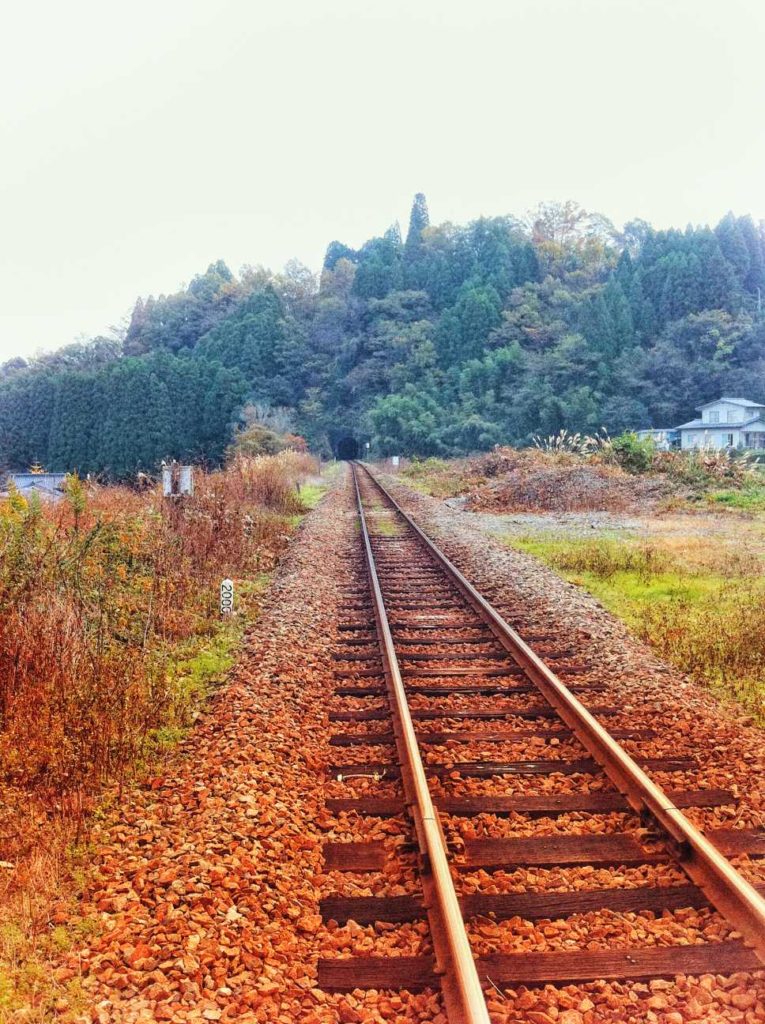
Bungoono Travel Tips and Where To Stay
Where To Stay
While Bungoono itself comprises mainly of villages and small towns, Miemachi (三重町) is the one that resemble the closest to an actual city and features a couple of accommodations. If convenience is your thing, check out Hotel Masunoi (ホテルますの井), located downtown Miemachi just 3-minutes walk from Miemachi train station (三重町). The hotel provides cozy room with wi-fi along with buffet breakfast; and a local communal bath right next to it. Also there is a Lawson (ローソン) convenient store as well as a whole street of local bars/izakaya (居酒屋) just 5-minutes walking distance.
Those who prefer connecting with the locals should consider Guesthouse Fukiaesu (ゲストハウス・フキアエス), a guesthouse located in the lush countryside 10 minutes drive away from Miemachi station. The local owner is known for his friendliness, in which he offers comfortable Japanese-style rooms containing futons (布団) as well as a spot for having BBQ. Definitely a great way to get in contact with the locals, which is a rare opportunity in the large cities.
For the outdoor enthusiasts and nature lovers, don’t skip out on Lodge Kiyokawa (ロッジきよかわ) which is 5 minutes drive away from Bungo-Kiyokawa station (豊後清川駅). This little resort features a unique experience of staying in treehouses, while having a nature therapy. The resort also offers plenty of outdoor activities to try out; including rafting, the relaxing river tent saunas and best of all, cliff jumping.
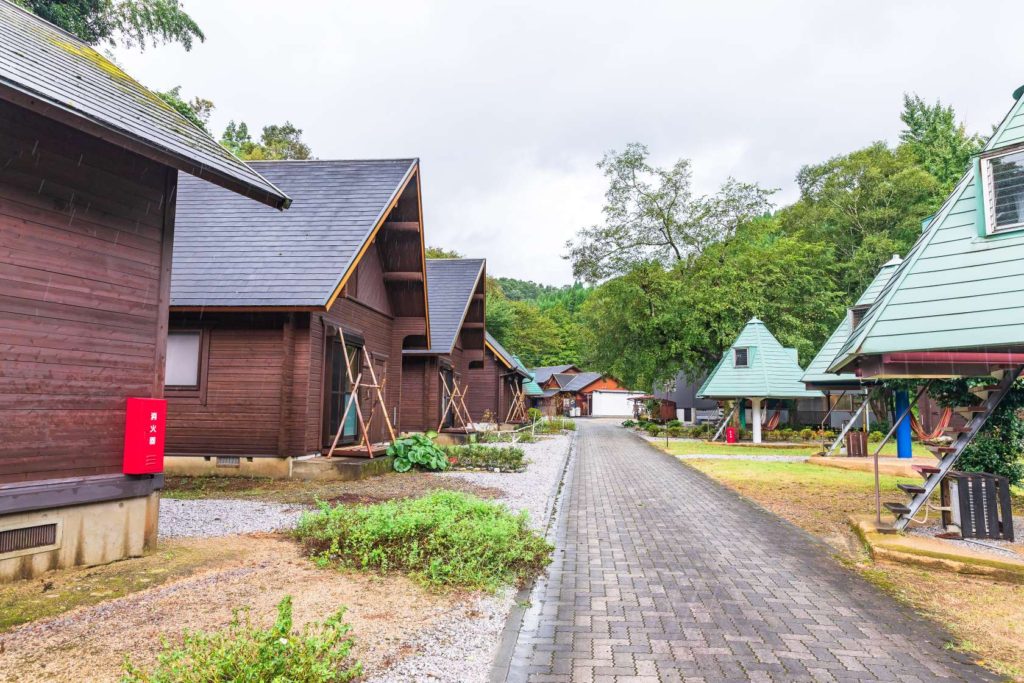
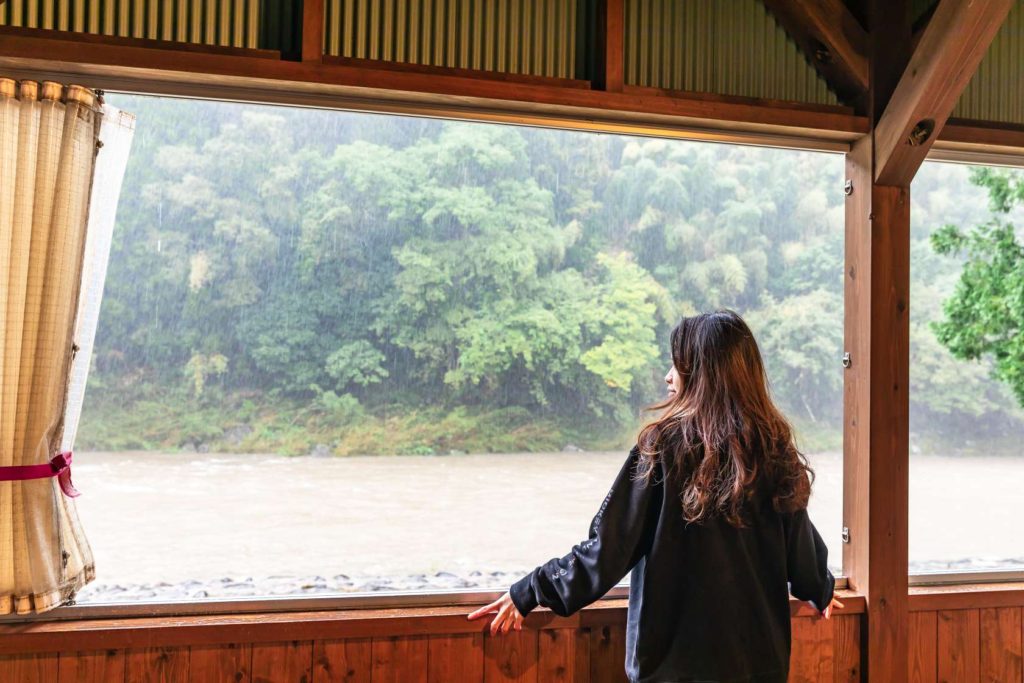
Best Time to Visit
The best time to visit Bungoono is really depends on what you intend to do for your trip. Spring (Mar – May) and autumn (Sep – Nov) are undeniably popular times to visit. Summer is a great alternative if you are into festivals and outdoor activities. On the other hand, winter is the least popular season to visit given the cold weather, but in the same time features some gorgeous winter scenery on the rare occasion of a snowfall. In fact, here are some attractions to consider for each season:
- Spring: Consider visiting Eboshi park for some cherry blossoms viewing and also Jinkakuji temple for a gorgeous display of rhododendrons. Great time to visit these gorgeous nature spots as well.
- Summer: Get ready for a blazing hot weather; best time to check out the local festivals as well as admiring the hydrangeas at Fukoji temple. The only time where you can witness the fireflies in the night too.
- Autumn: Time to enjoy the fall foliage, with Yujaku park especially being a prime. candidate. Wonderful time to visit the historical architectures too as they become stunningly beautiful with the presence of the autumn leaves.
- Winter: Perfect time to enjoy some of Bungoono’s warm and hearty dishes and hotpots with a glass of beer. Also, check out the largest underwater cave in Japan which remains warm in midst of the cold winter.
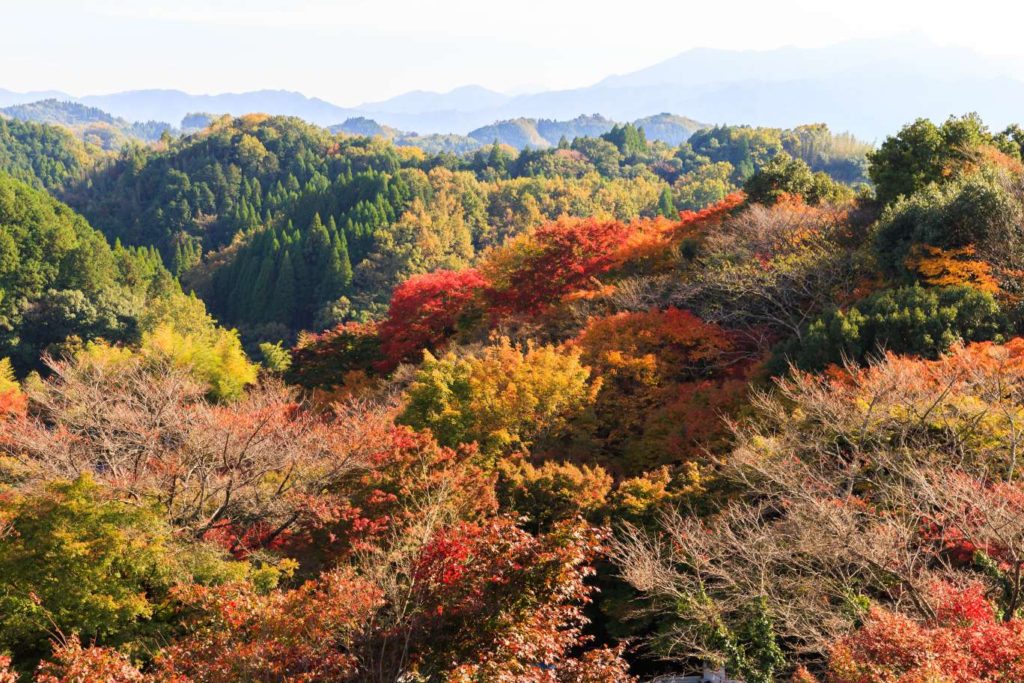
Overall Thoughts
If you are looking for a place to escape, don’t miss out on Bungoono, especially with its hidden profile status among tourists. It offers plenty of natural sights that are worth checking out just for its beauty. together with little historical sites that deserves more attention. In fact, going on a road trip around this area allows you to discover plenty of beautiful sceneries along the way as well as enjoying the peacefulness of the environment. Definitely check out Bungoono if you:
- Want to get out of the city and wander into the wilderness.
- Plan to go on a road trip and stopping by small destinations along the way.
- Are into nature photography (plenty of opportunities to snap the beauty of the mountains in Japan).
- Are a fan of outdoor activities, such as hiking, rafting and camping.
Loving the content here?
Subscribe and get your free hidden gems in Japan bucket list here.


You May Also Like
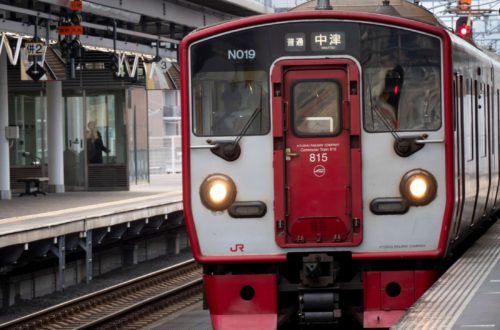
5 Unique Ways To Travel To Oita
November 27, 2021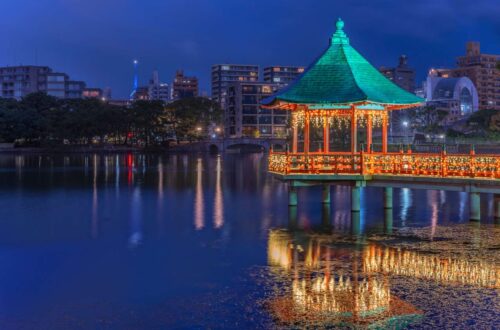
Ohori Park – The Ultimate Guide to Fukuoka’s Tranquil Park
May 6, 2023